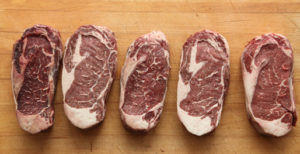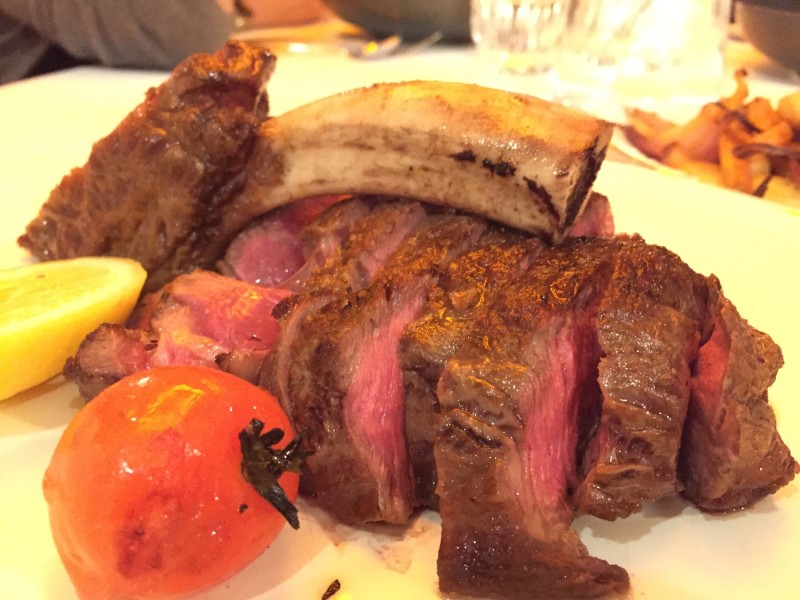At least, it’s easy when you have a million dollars or more in your bank account. But you have to keep in mind, too, that you are not just shelling out $3,200 for a piece of meat that you can get at any butcher’s shop and neighborhood steakhouse.
In fact, you will be paying for the beautiful experience of enjoying every savory bite of aged rib steak!
It Starts with the Cow
Wine and cheese are not the only food items that get better with age – the right kind of steak does, too.
According to Alexandre Polmard, the owner of Boucherie Polmard restaurant where the world’s most expensive steak can be ordered, the steak comes from the Blonde Aquintaine, a breed of cattle that rivals Kobe and Blank Angus.
The Blonde Aquitaine cattle are bred in an environment where stress levels are kept to the barest minimum.
This means the cattle enjoy ample roaming space in a farm in northeastern France; daily interactions (i.e., talking) with their human handlers; and customized diet, among others.
Even the abbatoir has been designed with unique features to ensure the least possible stress, even limiting the number of cows killed per week – just four, to be exact.
All of these special precautions are necessary since physical and mental stress experienced by the cattle can cause significant spikes in lactic acid and glycogen.
The resulting steak becomes less tender, less flavorful, and less receptive to the aging process that makes it worthy of the Boucherie Polmard dining table.
 It Continues to the Aging Process
It Continues to the Aging Process
Once the cuts have been selected, the meat will be preserved for any length of time. Polmard’s family calls its “hibernation”, a process where the beef is subjected to a slow aging process.
Basically, cold air with speed reaching up to 75 kilometers per hour will be blown on the beef, which ages in a -45⁰F environment – or in other words, a ventilated negative cold room.
The result: Arguably, the world’s most exquisite aged beef that you will be willing to pay $3,200 for a single serving for, if and when you can afford it.
The 2000 vintage rib eye steak has a melt-in-your-mouth quality with its oh-so-tender bite, an exceptional grain, and an ultra-low fat content – truly, a silky and feminine meat, as Polmard calls it.
You can get more of its exceptional qualities by pairing it with a Côte Rôtie de chez Jamet or a Saint-Aubin Premier Cru on its own or with pasta, ratatouille, or truffles.
But when you have yet to afford the $3,200 bill, you can always order the best steak at Mastro’s Steakhouse and still enjoy a filling, delicious, and hearty meal for a tiny fraction of the cost.
